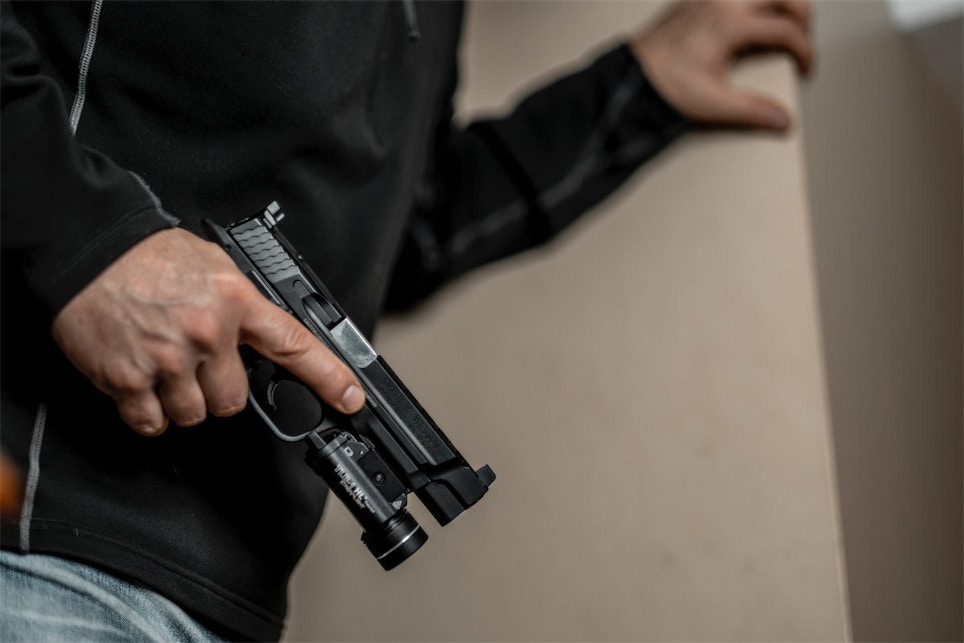The terms protection and defense, when considered in the setting of the shooting sports industry, may seem to mean the same thing. They don’t. Protection precedes defense and is requisite to it.
This kind of semantic separation may seem superfluous to many folks at first, but when one thinks about it, it not only makes sense, but also makes selling the right stuff to the right customer easier and more predictable.
This is where the motivation for a purchase comes into play. The customer wants to assuage concerns about vulnerability in the face of danger, real or perceived. Some of these customers are long-time shooters while others are arming themselves for the first time.
There are two ways to serve both. One is to make a quick sale involving the arms and ammo they had in mind when they walked through the door. The other way is to turn simple purchases into the beginning of an evolving lifestyle for the customer and repeated sales for the retailer.
Regardless of whether it’s a quick sale or the beginning of a more lasting relationship, it’s important to understand the line of least resistance while capitalizing on the emotional element that triggers the customer’s purchasing points.
To accomplish that, it is necessary that the customer understands that first he or she needs to be protected, which means having at hand the means to protect – gun, knife, club, whatever. Once the customer has the means of protection, they are able to defend themselves.
By breaking down the sales conversation into those two elements, it is much easier for the customer to focus more keenly on each step of the process and to understand better why one model/caliber combination may suit them better than others.
By definition, any lethal weapon offers at least some degree of protection and can be used in defense. Some are more appropriate than others, of course, and that depends on the individual and potential defense scenarios. This is where the discussion needs to be nimble and go with the flow of the customer’s thoughts at the time because, as the discussion evolves, so will the customer’s understanding of his or her preferences.
At first, the customer likely will be thinking about both protection and defense as an all-inclusive concept, likely figuring that one gun/ammo combination can be good for all scenarios. Although that can be achieved, it is helpful for the customer to determine whether the protection will be primarily in the home, in the car or elsewhere. This is important because strictly home defense does not assume shots beyond a few yards and it doesn’t assume that the arm will be carried.
Where will the primary protection be kept? Under the bed, in a drawer, in a closet, cupboard, or where? Keep in mind that in most homes, there also is a need to keep protective arms out of the hands of unauthorized folks, like children.
What this means is that a handgun needs to be able to be retrieved by the owner quickly from a dedicated small safe that also can keep the gun out of the hands of children. Upsell a safe in such instances.
Or, in some homes, a shotgun in the corner, closet or under the bed might make sense. Regardless the kind of gun, it is important that the customer be able to cycle and handle the gun effectively. Hence, size and weight of the firearm can be important things to consider.
If two or more gun/ammo combinations seem logical after considering the various elements of the protection part of the equation, it is time to shift gears and consider, with the customer, what the defense element entails for him or her.
By broaching the defense (actual use of the protection), the customer necessarily will need to think about his or her actions should protection need to be transformed into defense.
This is crucial because if the customer cannot or does not want to envision himself or herself actually using the gun for defense, he or she is probably better advised to opt for some other kind of protection than a firearm. Failure to engage at the moment of an attack can easily result in the attacker disarming the individual and even using that person’s gun against him or her.
For those who think they cannot or would not pull the trigger during an attack, alternatives like pepper spray make more sense. Defense only happens when protection is put into play. Here is where an old maxim comes into play: When seconds count, law enforcement is only minutes away.
Those customers who decide to go ahead and get lethal protection are likely to opt for a single model rather than acquiring two or more to match all scenarios, at least initially. That’s because they will focus on the primary kind of scenario in which the gun might be used.
For each firearm, there are other items that make sense for the customer to acquire. Ammunition, of course, is paramount. And, as mentioned earlier, some kind of lockable storage device likely is in order. If the customer will be carrying a handgun, then a holster is mandatory and the specific type of holster needs to be determined by the kind of carry (open or concealed), the customer’s body size and configuration, etc.
Almost as important as the hardware is the follow-up. It is important to convince the customer to follow up with training and practice. Encouraging post-sale training is important because it is a form of customer service and, the more the customer uses the firearm, the more often he or she will return for follow-up purchases.
When that happens, everyone involved wins.






